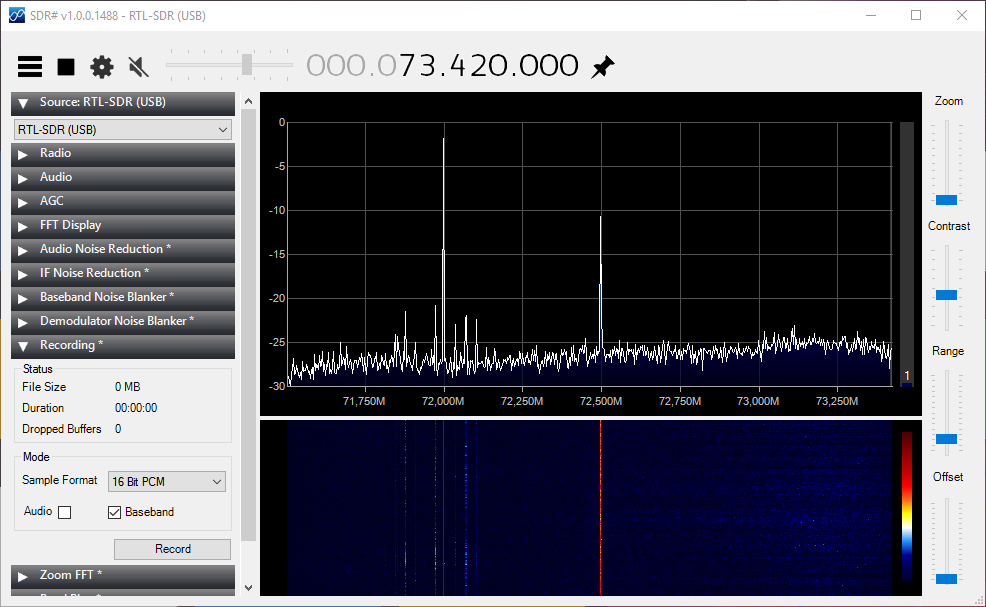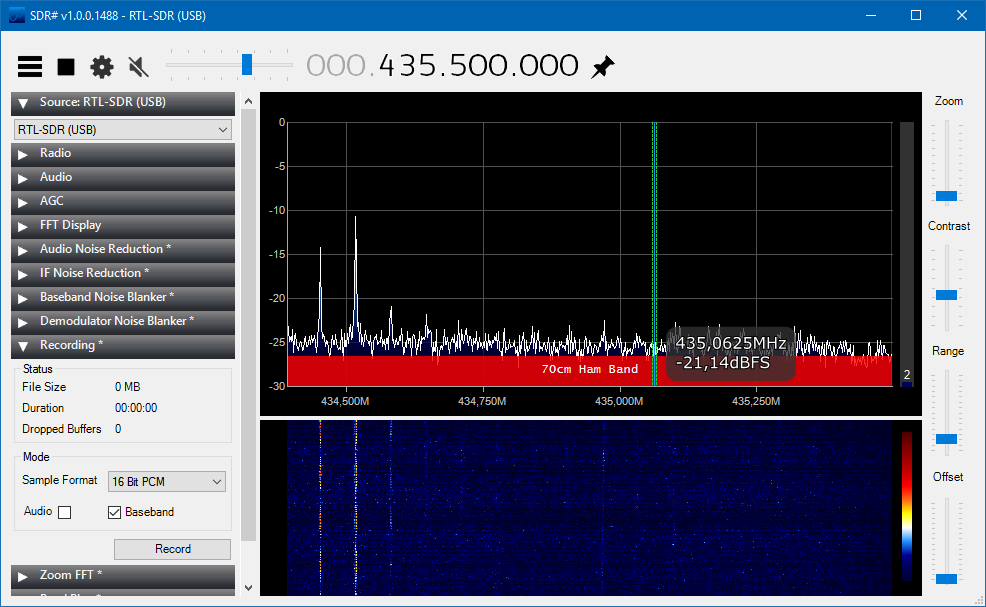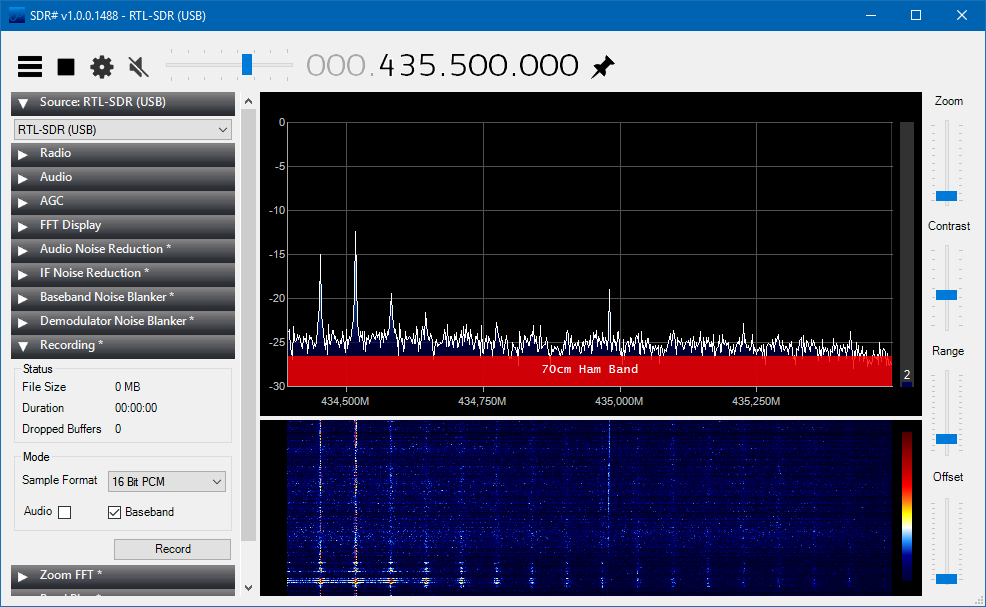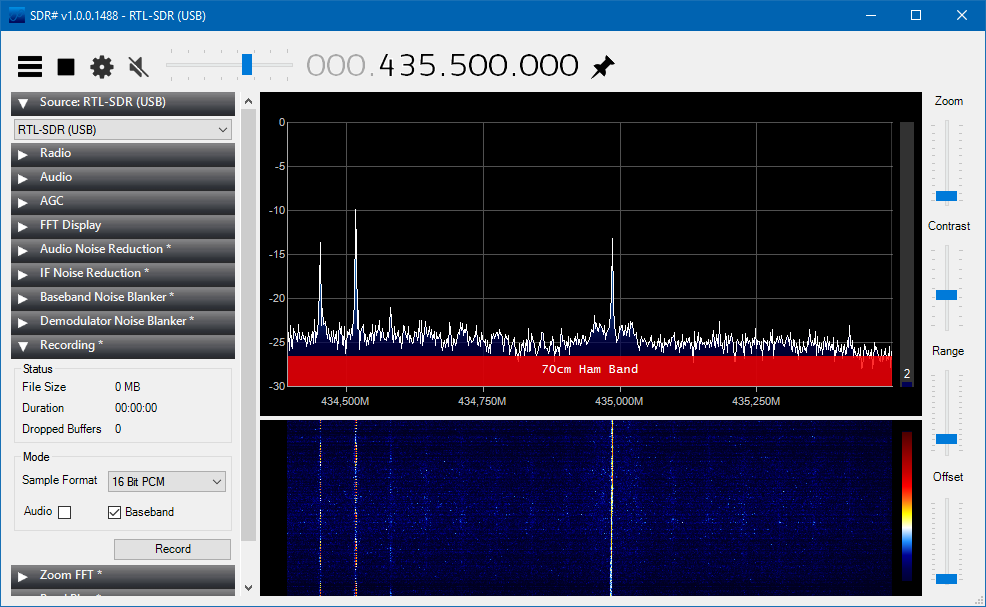STM32 F1 and F3 versus LRS 433MHz interference issue
This topic first appeared on my table few weeks ago. Can a flight controller interfere with long range system running on 433MHz band like openLRSng?
STM32 F1 and F3 based CPU running most flight controllers (Naze32, SPracingF3, Flip32, CC3D, etc.) run on 72MHz. Actually this is 8MHz of external clock and 9 multiplier. But still, CPU itself runs on 72MHz. Most LRS systems runs between 413MHz and 453MHz, with most channels grouped around 432 and 433MHz frequencies.
This might create a problem, since 432MHz is a 6th harmonic frequency of 72MHz. Theoretically, perfect square wave should have only odd-number harmonics, but in the real life, both even and odd harmonics are present.
Are those frequencies from flight controller "visible" in 433MHz band and can they affect LRS systems? I do not have LRS system yet, so I can not answer the second question. But I can answer the first one with the help of a small RTL-SDR radio dongle.
The test
Tests were performed with a RTL-SDR and FM frequency antenna (I know, far from perfect) placed 20cm, 10cm and 5cm from running Flip32 10DOF flight controller (STM32F1 CPU at 72MHz).
According to SDR software, exact clock frequency was 72,MHz which was caught nicely on the radio spectrum.
6th harmonic frequency for 72.5MHz is 435MHz and this a frequency SDR was tuned to during test.
Flight controller 20cm from antenna
Flight controller 10cm from antenna
Flight controller 5cm from antenna
Conclusion
- At 20cm, signal from flight controller was almost indistinguishable from background noise
- At 10cm, signal was clearly visible at exactly 435MHz frequency
- At 5cm, signal was very strong and probably would interfere with 433MHz LRS system
To avoid potential interference, I suggest:
- Place LRS antenna as far from flight controller as possible. For example, on a wing. Do not place antenna in close proximity to FC or other electrical devices
- With cheap (more less $10) USB SDR dongle you can measure exact harmonic frequency. According to my observation, it has a very narrow band. Thanks to this, you can setup LRS channels to avoid "poisoned" frequencies

I'm Paweł Spychalski and I do things. Mainly software development, FPV drones and amateur cinematography. Here are my YouTube channels:




